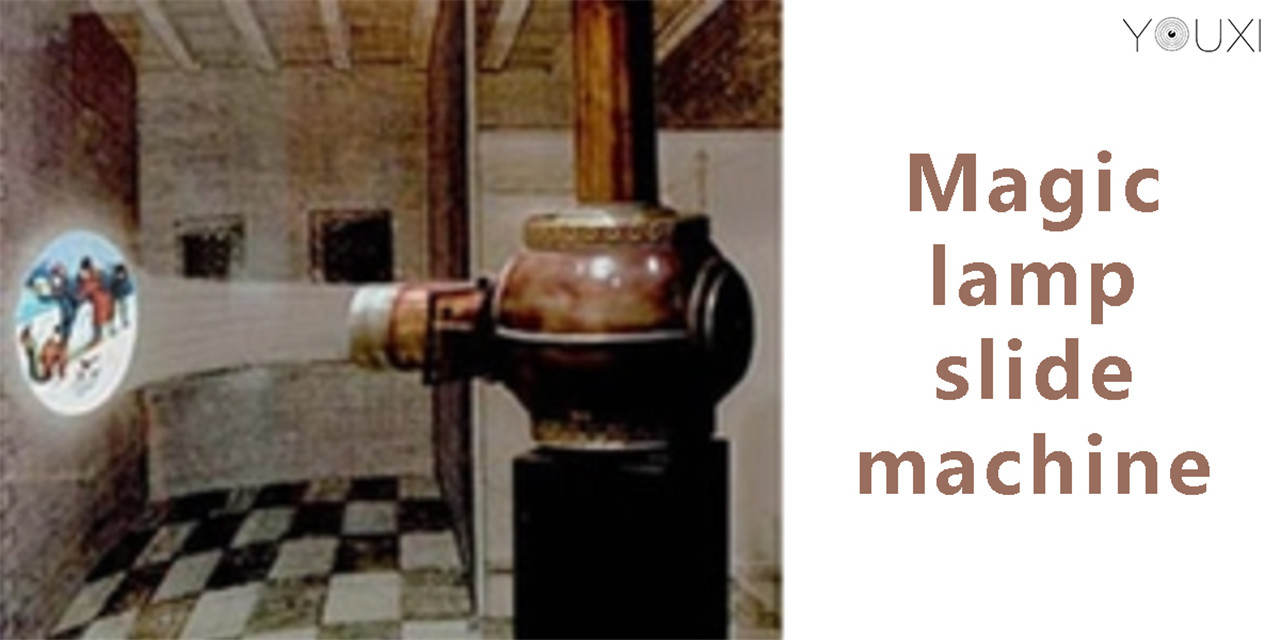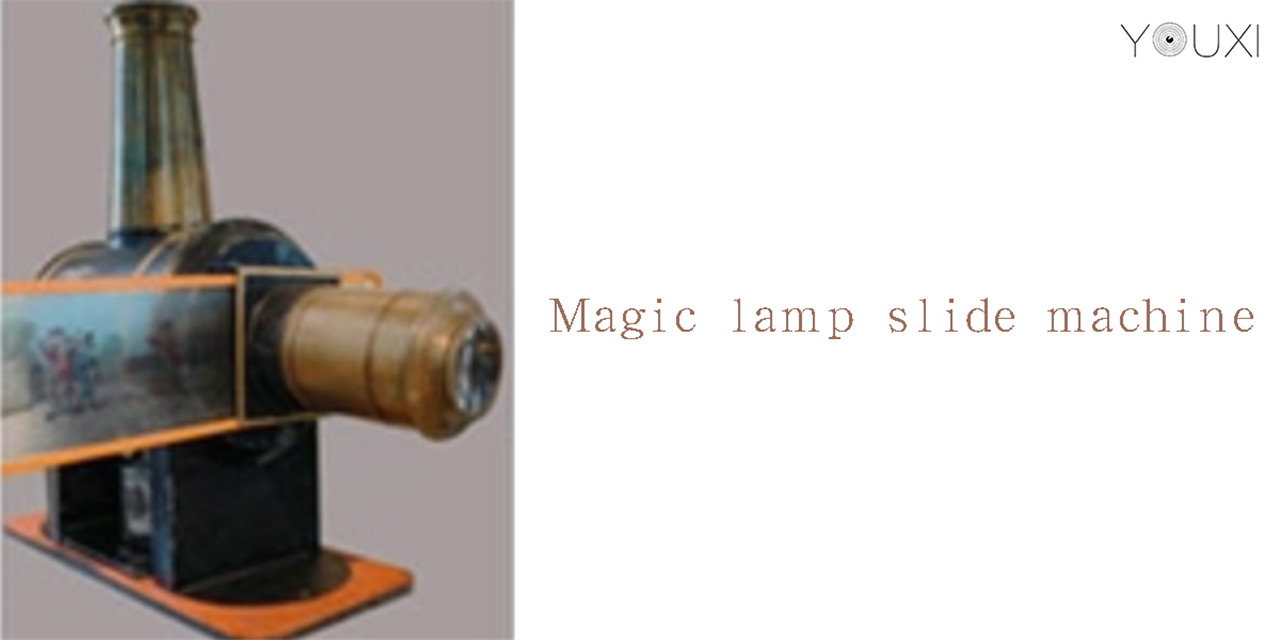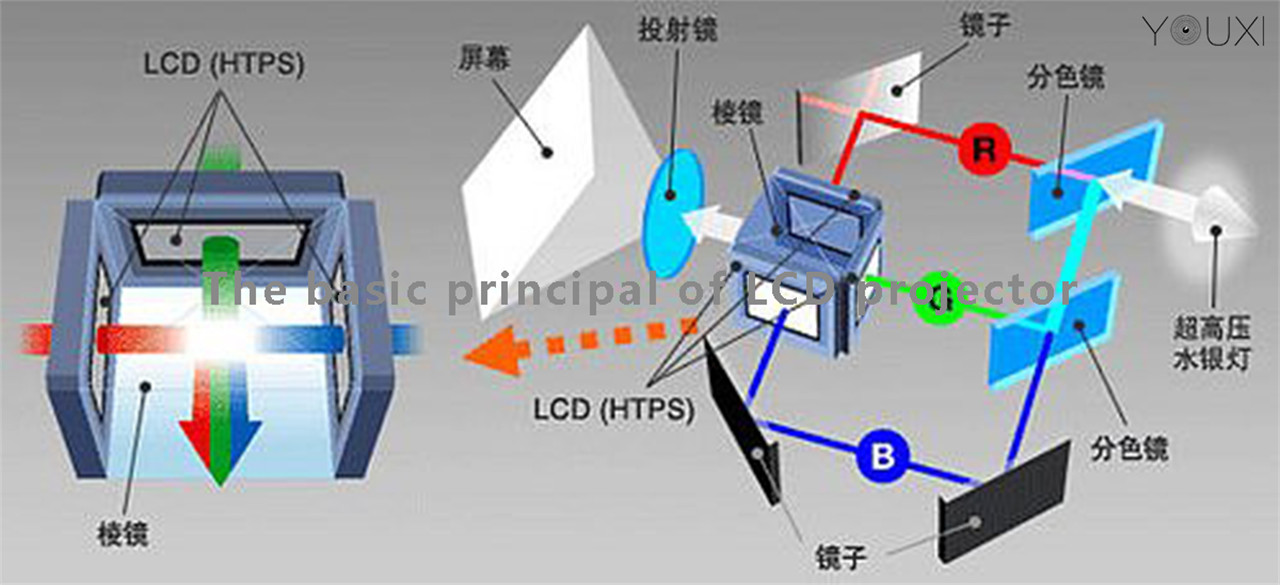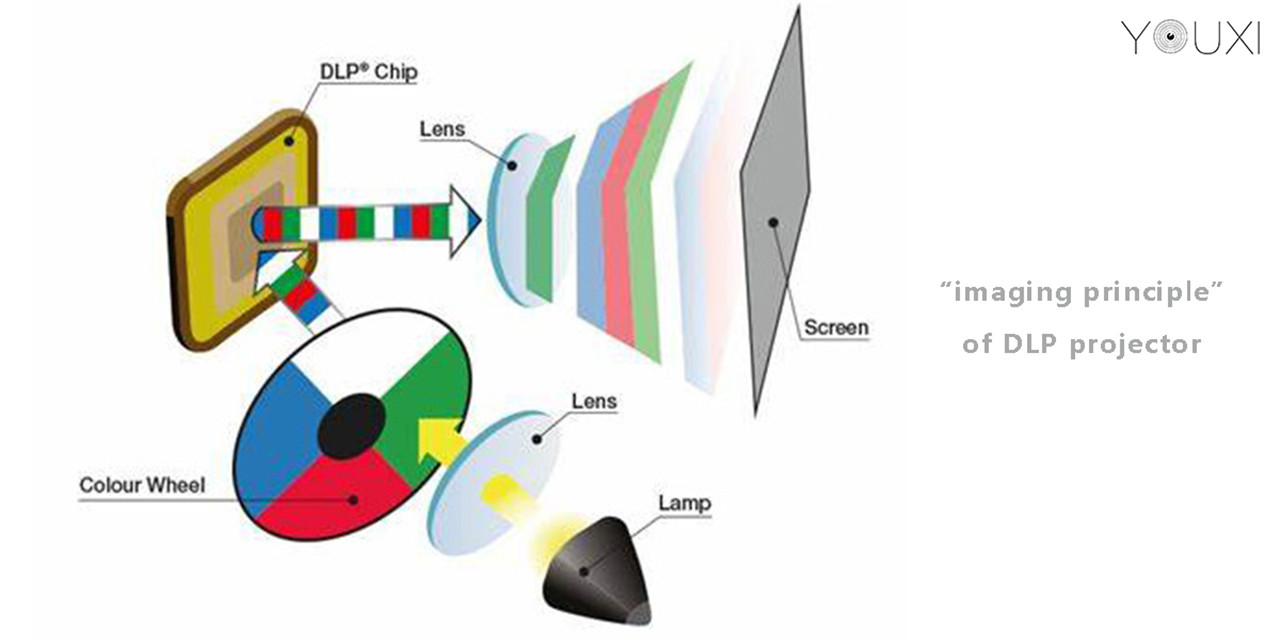Before the projector, slide had been used as the dominant product in the industry, and it was seen as a special form of projector.The appearance of slide machine dates back to 1640 AD,at that time, a Jesuit priest invented a slide called magic lamp, using lens and mirror reflect light principle, a series of pictures reflected on the wall, caused a sensation, but it is because of the invention,he was accused of magic, attracted the murder, and was sent to the "guillotine".
Chiser's death, however, did not interrupt the pursuit of new technology, and the German Jewish Kischal first described the invention of the slide machine in 1645.The original shell of the slide is iron into a square box, the top of a smoke exhaust cylinder similar to the cylinder, in front of a cylinder, cylinder with a sliding convex lens, form a simple lens, there is a panel of adjustable focal distance between the lens and the iron box, the box contains light source, the original light source is candlelight.When using, the slide machine is placed in a black room, the slide into the slot behind the convex lens, lit the candle, the light source through the mirror reflection convergence, through the transparent picture and lens, form a light column reflected on the wall screen.
In 1845, with the booming of the industrial Revolution, slide machines also entered the era of industrial production,the light sources also changed from previous candles to oil lights, steam lights, and finally began the use of electric light sources.
The earliest slides were made of glass, by manual painting, and by the mid-19th century, after the Americans invented the celluloid film,the slides were produced using photographic shift.Later, the projector, which we used widely, was developed and improved on the basis of the 19th century slide machine.
After World War II, the invention of computers, the large emergence of integrated circuits and the invention and extensive application of new technologies brought the projector into the digital era.The initial projector uses the CRT technology, the early displays and TV sets are CRT technology,their main feature is the large size.Later, LCD technology appeared, and the development of LCD technology also made CRT began to become history.
In 1968, G.H.Heilmeier, a US scientist at RCA Corporation, made the liquid crystal into an LCD according to the dynamic scattering effect,forming the prototype of the LCD industry, but it never commoditized the technology.It was not until 1973 that Japanese Sharp successfully developed calculators and watches with LCD technology as the display panel, and led many manufacturers such as Hitachi, NEC and Toshiba to join the LCD product development and production ranks.
Applied the LCD technology to the projection device is Epson, which uses the liquid crystal to change the arrangement under the action of electrodes so that the light source through the LCD chip can project images through the lens.Although being the latest technology of the time, the LCD projector still had performance and color defects based on the monolithic structure, with both extremely low opening rate and resolution.It was not until 1995 that single-piece LCD projectors were officially put into the market, followed by another 3LCD technology in 1996, with a breakthrough in stability and color performance.Sony joined developing LCD chips, but announced in 2004 that it would stop offering its LCD chips for internal use only.So far, the LCD projection technology is monopolized by Epson and Sony.
In 1987, Dr. Larry Hornbeck developed the first DMD device. By 1996, data optical processing DLP technology was officially commercialised to the projection display market, and the first DLP projector was launched, only seven years after the LCD projector.
The original DLP chip had a prototype resolution of 16*16, while the early DLP projector had only 300 lumens, meaning it could only be seen in darker environments.Nevertheless, the two differentiated market strategies of DLP technology have played a good role in guiding its technology development, and quickly occupied the market, bringing a lot of pressure to LCD projection technology.
DLP projector in the early market with this advantage, from 1997 only weighing 6 pound InFocus LP420 to 2005 Samsung's pocket projector, DLP projector continues to launch new refresh the concept of "portable", swept the business market with eager demand for mobile, thus gaining a foothold in the market, and in 2006 in the global market won over 20% market share, with LCD technology.In addition, the three-piece DLP projector was applied to high-end engineering and cinema projects, making up for the technical gaps in high resolution and high stability that LCD projectors cannot solve in the past.
Although DLP technology is more advanced, LCD technology is more controllable in the supply chain, cost, compared with DLP, and other more advanced technology, the cost is more controllable, more stable performance, the scope of application, especially in the post-epidemic era, will widely become a more popular electronic consumer goods in a certain period.
Post time: Dec-27-2021













